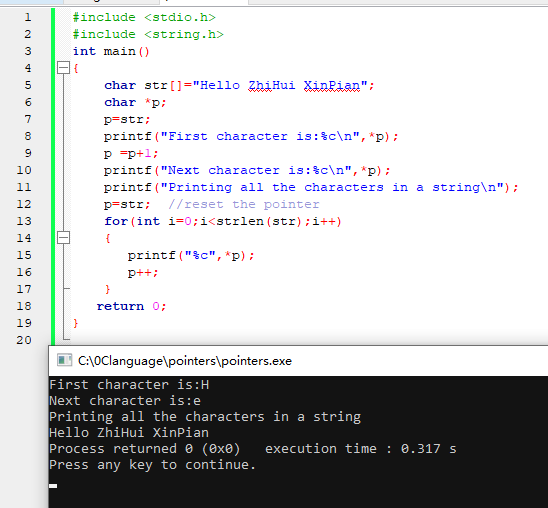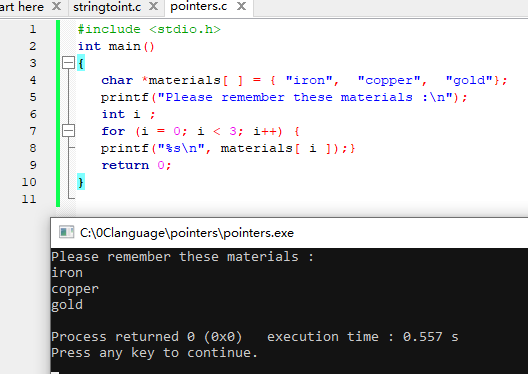字符串是char数组,以空字符’\ 0’结尾。 我们可以使用指针来操作字符串。 这是解释此部分的示例:
例1.指针和字符串
#include <stdio.h>
#include <string.h>
int main()
{
char str[]="Hello ZhiHuiXinPian";
char *p;
p=str;
printf("First character is:%c\n",*p);
p =p+1;
printf("Next character is:%c\n",*p);
printf("Printing all the characters in a string\n");
p=str; //reset the pointer
for(int i=0;i<strlen(str);i++)
{
printf("%c\n",*p);
p++;
}
return 0;
}
结果

例2.指针数组处理字符串
#include <stdio.h>
int main()
{
char *materials[ ] = { "iron", "copper", "gold"};
printf("Please remember these materials :\n");
int i ;
for (i = 0; i < 3; i++) {
printf("%s\n", materials[ i ]);}
return 0;
}
结果

除教程外,本网站大部分文章来自互联网,如果有内容冒犯到你,请联系我们删除!
